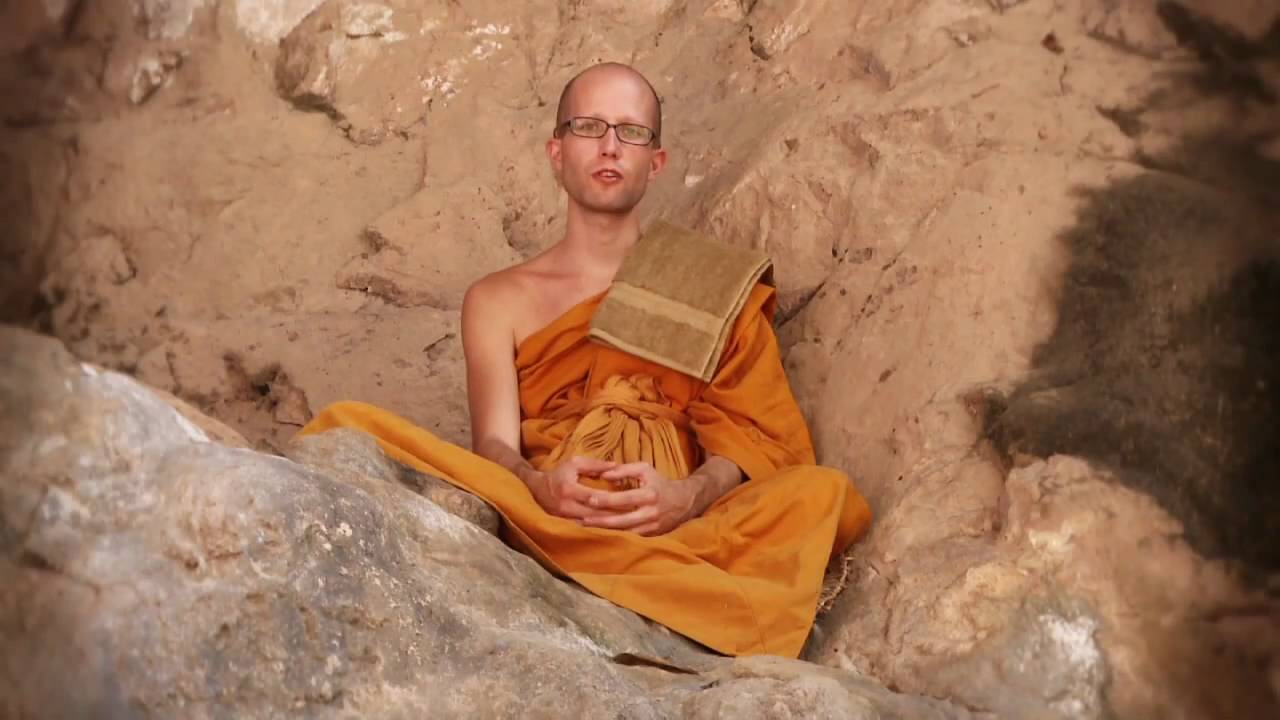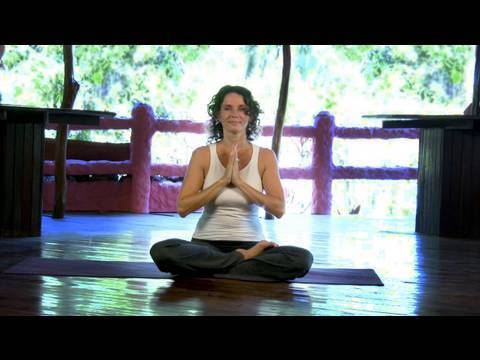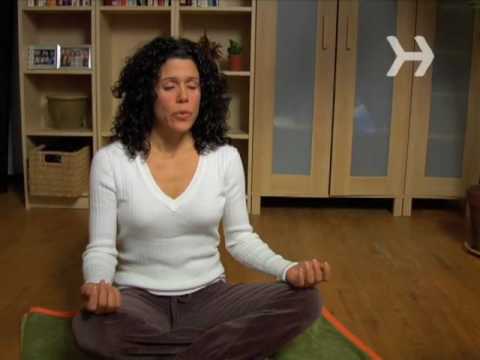How to Meditate :

Sixth (of six) in a series of videos on how to practice meditation without the requirement of religious dogma or spiritual mumbo-jumbo. This video discusses …


Sixth (of six) in a series of videos on how to practice meditation without the requirement of religious dogma or spiritual mumbo-jumbo. This video discusses …

https://secrets2meditation.com/goto/?url=http://LodroRinzler.com Congratulations to Wendy, the winner of the WALK LIKE A BUDDHA book giveaway contest. Lodro Rinzler answers her question this week: “…

Fourth (of six) in a series of videos on how to practice meditation without the requirement of religious dogma or spiritual mumbo-jumbo. This video discusses…

DVD, add to cart: https://secrets2meditation.com/goto/?url=http://yogayak.com/DVD_Morning_Afternoon -2 amazing classes for .95 free shipping — or — Free download: https://secrets2meditation.com/goto/?url=http://yogayak.com/Dagmar_Morn…
As you start the mindfulness meditation practice, you have a sense of your body and a sense of where you are, and then you start to notice the breathing. The entire feeling of the breath is imperative. The breath should not be forced, try to breath naturally. The breath is going in and out, in and out. With each breath you become relaxed.
During mindfulness meditation practice try to recognize the movements of the mind, which you experience as thoughts. As soon as you start thinking about something with emotions attached, try use the breath as the object of meditation; it is particularly helpful because it will relax you.
The objective of mindfulness meditation is not to distract your attention away from stressful thoughts, but rather to just observe the thoughts without responding to them. You have to be a neutral observer of everything that passes before your attention. Your goal is not to be focused, but rather to be mindful, that is, to be fully aware and awake of what is going on in the present moment.
Mindfulness is the condition of being fully engaged in the present moment, without analyzing or in other words without ‘overthinking’ the experience. Rather than worrying about the future or reflecting on the past, mindfulness meditation toggles the focus to what’s happening right now.
Everything is welcomed. You just pay attention to whatever is there. Try not to form an opinion or evaluate – just sit calmly and observe. Sooner or later, the mind will become calmer and incoherent thoughts will begin to slow, but try to keep away from the temptation to think about this understanding.
When ready slowly finish your practice.
Allow yourself a few seconds to just sit and feel the effects of your meditation. It is essential not to try to evaluate how you did and avoid labeling it as a good or bad practice, just allow it to be what it is. Mindfulness meditation is particularly effective at reducing stress, anxiety, depression, and other negative emotions. Practicing mindfulness meditation helps you to develop a skill to stay calm and not react to everyday stresses, but rather let them pass as events
Carole is the author of some web-blogs in Health category. You can find more interesting and useful information at Yoga and Meditation Blog and Ideal Weight Blog.
We all go through unpleasant phase in our lives. There might be people who might have deeply hurt you or disappointed you. Your heart becomes filled with negative emotions like anger and resentment which in turn tends to eat you up from within, harming you physically as well as mentally. In such a situation you have a tendency to develop a vindictive attitude towards those who have hurt you and vengeance is what you seek for.
But is this the way you can achieve peace of mind or heal yourselves? If you continuously harbor grudge against others, you will never be able to grow up as a better human being. The secret to attaining contentment, poise, and better health is to let go everything that has hurt you and forgive those who have disappointed you.
When you are hurt too deeply, it becomes very difficult for you to forgive or release all the negative emotions. However, you need to understand that though, forgiving might seem to be difficult yet by letting go off these negative emotions, you will pave way to better emotional health. In other words, forgiveness plays a major role in healing your wounds.
Forgiveness doesn’t happen overnight and like many other things in life, it takes practice, and patience to learn the art of forgiveness. The great thing about forgiveness is that you may do it for the other person but in the long run you are the one who benefits the most from it.
When you choose not to forgive, you are harming yourself while preventing yourself from growing emotionally as well as spiritually.
Forgiveness has long laid the foundation for spiritual well-being.
Healthy forgiveness integrates self respect and wanting better for your own self. This will help you to rise above the desire for vengeance, and instead invite universal love to flow through you so that you can pardon the person who hurt you, unleash the old pain and move ahead to achieve better things in your life.
It is important to cultivate empathy in order to practice forgiveness, which allows you to develop understanding as well as sympathetic attitude towards the offender. This serves as a great motivation for genuine forgiveness. Evidences suggests that forgiveness has played a key role in lowering depression, anxiety and other physical conditions, such as high blood pressure and heart rate.
Forgiveness is a virtue that is given by God to his children to extend quickly and limitlessly. Though it may require commitment, patience and focus yet by giving it freely, you exchange anger, hatred and resentment for joy, peace, and freedom.
Chamunda Swami Ji practicing spiritual healing in USA as well as in India. Swami Ji also conducts world tours of his spiritual seminar wherein he gives discourses on Meditation Techniques, Mantra and Tantra followed by a live question and answer session.- Spiritual Healer

Watch more Learn about Meditation videos: https://secrets2meditation.com/goto/?url=http://www.howcast.com/guides/412-Learn-about-Meditation Subscribe to Howcast’s YouTube Channel – https://secrets2meditation.com/goto/?url=http://howc.st/uL…

The goal of Buddhism is to decrease and eventually free the mind of attachment, which is the direct cause of dukkha, or suffering. Dukkha is an inherent component of samsara, or the cycle of death and rebirth. This freedom from attachment is therefore the antithesis to samsara, known as nirvana. Nirvana is a “blowing out” of the three fires, each of which represents a specific class of attachment. The method of achieving the cessation of dukkha is prescribed by the Buddha in his fourth Noble Truth, which is the Noble Eightfold Path. Within this octangular obligation eight practices are situated in three divisions, called prajna, sila, and samadhi, or wisdom, ethical conduct, and concentration, respectively. Prajna and samadhi are directly related to meditative practice.
Two principal psychological qualities are said to emerge from the proper practice of Buddhist meditation: samatha and vipassana. Samatha is a “calm abiding” or “remaining in rest.” Vipassana is a “discerning sight,” “introspection,” or as most commonly translated, “insight.” Both qualities arise from meditative practice and have also influenced styles of meditation, designed to target the appearance of the sought-after qualities. Samatha meditation seeks to compose and steady the mind using objects of concentration as a central point of focus, such as a mantra, the breath, or a visualization. Vipassana meditation strives to enable one to identify skandhas, or the five aggregates of experience, through contemplation and self-observation exercises. The enhancement of sustained attention is achieved through samatha meditation, resulting in samadhi. Insight into the true nature of experience is a result of vipassana meditation, and from it grows prajna.
In rudimentary language, samatha meditation calms the mind and vipassana meditation helps determine why the mind wasn’t calm from the beginning.
The primary aim of samatha meditation is to establish the mind in the tranquility of one-pointedness (and ultimately, no-mindedness, or nirvana). However, the immediate aspiration is the suppression of the five hindrances which impede progress with concentration. The five hindrances include sensual desire, anger, sloth, restlessness, and doubt. Sensual desire is a craving for pleasure within the six senses. Anger is an aggressive malice directed outward or inward with the intention to manipulate experience. Sloth represents any action performed without mindfulness or concentration. Restlessness is usually a worry interfering with the ability to calm the thoughts. Doubt is a deficiency of conviction in the dharma. The conquering of the five hindrances establishes the mind in the first jhana, one of nine distinguished meditative states.
A jhana is a dual (and further, non-dual) absorption with the object of attention, upon which a full concentration allows a gaining of insight as it eventually falls away and the meditator observes his own flux of experience. The first four levels of attainment are termed the rupajhanas, or material jhanas. The first jhana begins with the suppression of the five hindrances and the emergence of the five absorption factors. The first is applied thought, which directs the mind to the object of concentration. The second is sustained thought, which keeps the mind focused upon the chosen object. Third, a joyous rapture is manifested as one approaches the fourth absorption factor, bliss. Bliss is sukkha, the opposite of dukkha. Lastly, a unification with the concentration object is achieved (one-pointedness). The growth of these factors in the first jhana reduces the mind to only the most subtle movements concerning the right intentions of meditative pursuit. In the second jhana, the first two absorption factors are eliminated as the mind completely situates itself in a calm abiding. The mediator experiences an absence of doubt as a complete confidence pervades. In the third jhana the meditator acquires a more fully blissful experience as the joyous rapture is terminated. The fourth jhana exchanges sukkha for equanimity, leaving only pure consciousness. One-pointedness is now secured.
Once one-pointed, the mind is capable of vipassana meditation, the consequence of which is the culmination of prajna and jnana, or knowledge. Prajna is the wisdom of attaining right view and right thought or intention, which are the first two spokes of the Noble Eightfold Path. Right view is a proper understanding of the five aggregates of experience. These five aggregates explain experience without summoning a concept such as a soul. Right view of the aggregates leads one to the revelation of anatman, or the non-self, insinuating the lack of permanent individual existence. This impermanence is anicca. A proper mental grasp of the aggregates leads to a comprehension of dukkha, which arises from clinging to the aggregates. Thus insight leads to prajna, which leads to jnana, or knowledge, specifically of the three marks of existence, anatman, anicca, and dukkha, all of which imply sunyata, or the voidness of reality. Things in reality are void of individual enduring existence as explained in the idea of dependent arising, which elucidates the interconnectivity of all things.
The fifth through eighth levels of concentration represent levels of attainment beyond the material jhanas, exploring the insights of sunyata and beyond. These are the arupajhanas (immaterial jhanas), and are, sequentially, the formless dimensions of infinite space, infinite consciousness, nothingness, and neither perception nor non-perception. In the fifth jhana, the meditator finds the personal limits of the body dissolving and expanding to the furthest reaches. Next, the mind fills this enlarged sense to become cosmically conscious, or all-perceiving. If further stillness is attained, all is abandoned as the meditator enters an experiential realm of nothingness, or non-perception. In the eighth and final arupajhana, zero mental activity remains yet a pure sense of being is obtained. This is neither perception nor non-perception, but consciousness without an object. Or, finally, no-mind.
Through this high level of samatha, combined with vipassana, a ninth jhana is possible. There is a complete cessation of feeling, without even a sense of being. The ninth jhana is totally un-conscious, or non-sentient. There has been a dissolution of the body, space, the mind, and all other forms of delusion, together known as ignorance. There has been a complete cessation of the cravings commonly called greed. The inverse attachments, or aversions, have disappeared, removing anger altogether. Ignorance, greed, and anger are the three fires which bind beings in samsara. As the “blowing out” and extinguishing of the three fires is performed, a flash of nirvana occurs. Nirvana is beyond perception, non-perception, both, and neither. It is a total transcendence of samsara.
The meditator is now free. What remains is a choice. Choose the moment to take mahasamadhi and achieve parinirvana, or continue within samsara, compassionately practicing the paramitas, or perfections, of the bodhisattva for the sake of others, until all sentient beings obtain moksha, the liberation from the chains of samsara. Although, from the perspective of the dharmakaya, the choice contains no meaning or relevance, since samsara is nirvana, and nirvana is samsara.
For more information on buddhist meditation, such as the buddhahood, please visit Jared B. Hobbs at his blog Meditations and become a Scholar of Consciousness!

www.yusuf-yusuf85.blogspot.com ALBUM Relax – Buddhist Meditation Music – Zen Garden – Kokin Gumi – Da New AGe – Chill Out – Lounge Music https://secrets2meditation.com/goto/?url=http://www.yusuf-yus…
Video Rating: 4 / 5